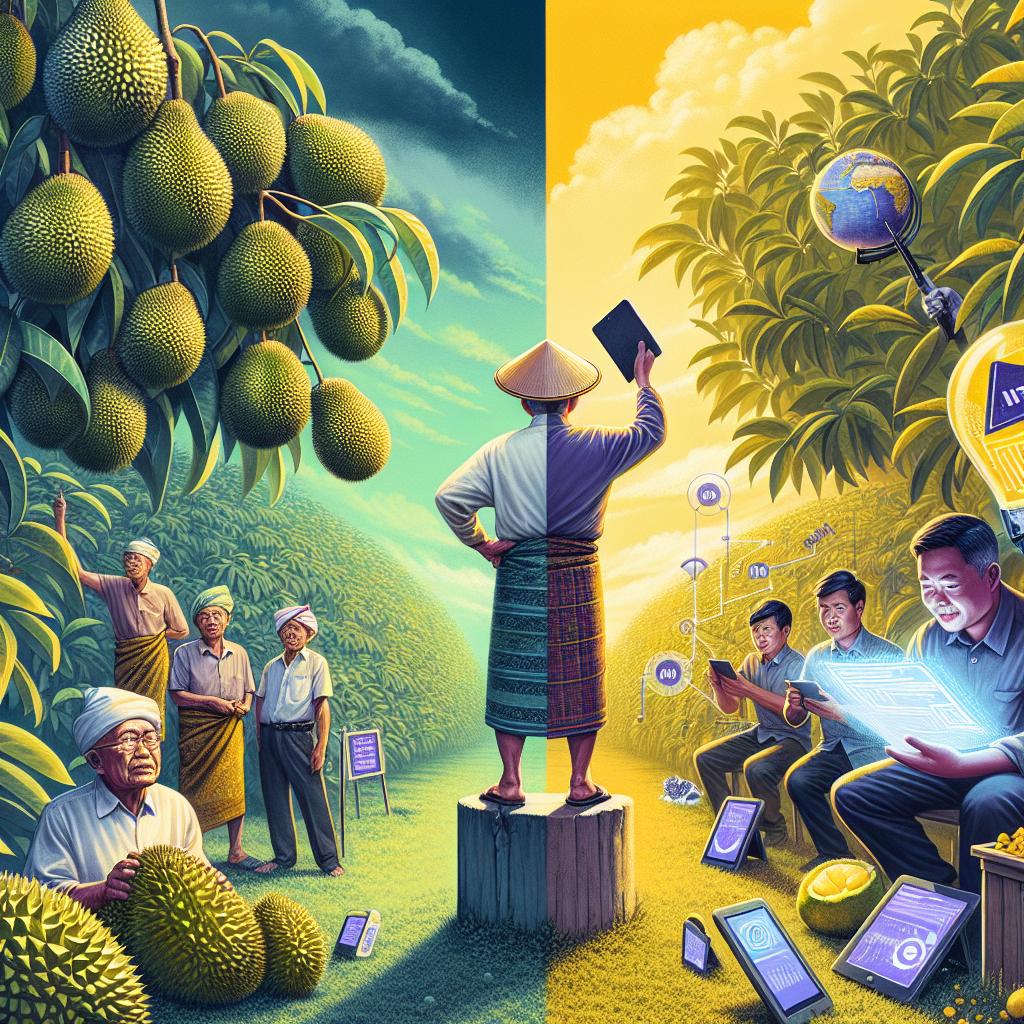
Emerging Challenges in Malaysian Agriculture: Legal Disputes and Technological Innovations

Emerging Challenges in Malaysian Agriculture: Legal Disputes and Technological Innovations
Legal Battles and Innovations: The Dual Fronts of Malaysian Agriculture
Currently, Malaysian farmers are actively engaging in a legal struggle to protect approximately 2, 400 hectares of durian farmland from a company's takeover. This situation highlights the urgent need for regulatory clarity and the protection of farmers' rights amidst a rapidly changing agricultural landscape (d1). As agriculture becomes increasingly vulnerable to corporate interests, the resilience of smallholder farmers is being tested, revealing broader implications for food security and rural livelihoods in Malaysia.
Simultaneously, Malaysia is witnessing a transformation driven by technological advancements aimed at bolstering food security through initiatives like smart farming. The government is currently implementing remote-controlled sensors and IoT devices to enhance crop management, thereby transitioning towards more sustainable and efficient agricultural practices (d3). This trend suggests that while traditional agricultural practices face legal and economic pressures, the future may see a blend of technological innovation and traditional farming that could drive resilience and productivity.
However, the generational gap in the agricultural workforce remains a critical barrier to sustained growth. Presently, only 15% of Malaysia's agriculture workforce is under the age of 40, indicating a stark decline in youth participation due to perceptions of agriculture as a low-status profession (d5). This trend poses a significant risk to food security as the average age of farmers continues to rise. The challenge is to attract young talent to agriculture by improving perceptions and providing better access to modern techniques and financial support, ensuring a viable future for the sector.
As Malaysia's population is projected to reach 40-42 million by 2050, ensuring food security remains paramount (d10). The country must address its heavy reliance on food imports, which exposes it to global market fluctuations. The intersection of legal challenges, technological adoption, and generational shifts will likely shape the landscape of Malaysian agriculture in the coming years. Future strategies must integrate these elements to create a sustainable agricultural system that meets the needs of a growing population.
Glossary
- Durian [Product]: A tropical fruit known for its strong odor and distinctive taste, widely cultivated in Southeast Asia, including Malaysia.
- Smart Farming [Concept]: An agricultural practice that utilizes advanced technologies, such as IoT and remote sensors, to optimize farming efficiency and productivity.
- IoT (Internet of Things) [Technology]: A network of interconnected devices that communicate and exchange data, enabling remote monitoring and management of agricultural processes.
- Food Security [Concept]: The condition in which all individuals have reliable access to sufficient, safe, and nutritious food to maintain a healthy life.
- Generational Gap [Concept]: The differences in attitudes, values, and participation levels across different age groups in the workforce, particularly affecting youth involvement in agriculture.
- Sustainable Agriculture [Concept]: Farming practices that aim to meet current food needs without compromising the ability of future generations to meet their own needs, often emphasizing environmental health.
Source Documents
- Malaysian farmers consider legal action to protect 2, 400 ha durian farmland from new company’s takeover - VnExpress Internationalhttps://e.vnexpress.net/news/business/companies/malaysian-farmers-consider-legal-action-to-protect-2-400-ha-durian-farmland-from-new-company-s-takeover-4893284.html
- Malaysia turns to smart farming to boost food securityhttps://www.straitstimes.com/asia/se-asia/malaysia-turns-to-smart-farming-to-boost-food-security
- Generational gap widening in agriculture sectorhttps://thesun.my/malaysia-news/generational-gap-widening-in-agriculture-sector-EN14085890
- Malaysia food security: Challenges and opportunities amid a growing populationhttps://malaysia.news.yahoo.com/malaysia-food-security-challenges-opportunities-232227119.html